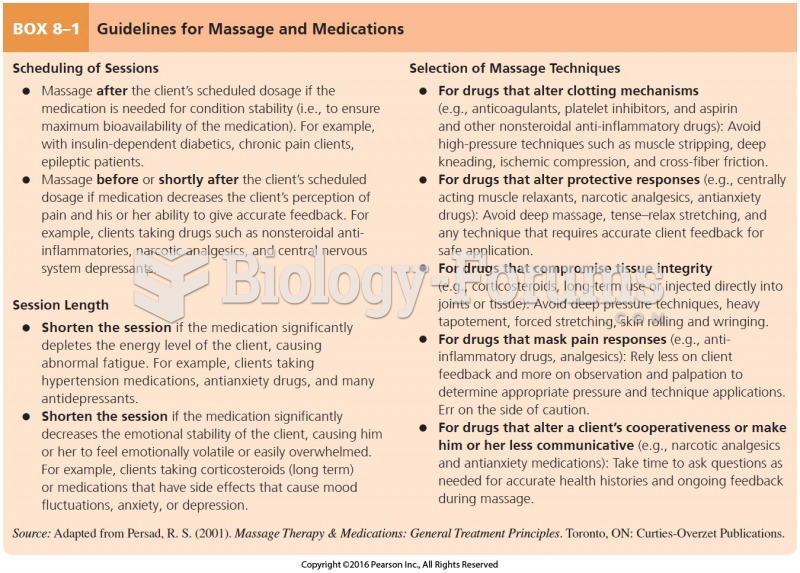|
|
|
Did you know?
The average human gut is home to perhaps 500 to 1,000 different species of bacteria.
Did you know?
Intradermal injections are somewhat difficult to correctly administer because the skin layers are so thin that it is easy to accidentally punch through to the deeper subcutaneous layer.
Did you know?
Thyroid conditions may make getting pregnant impossible.
Did you know?
Interferon was scarce and expensive until 1980, when the interferon gene was inserted into bacteria using recombinant DNA technology, allowing for mass cultivation and purification from bacterial cultures.
Did you know?
Bacteria have been found alive in a lake buried one half mile under ice in Antarctica.
 The Allen Test: Pallor is initiated by compressing the radial and ulnar arteries with the fist clenc
The Allen Test: Pallor is initiated by compressing the radial and ulnar arteries with the fist clenc
 The stages of labor and delivery. (A) During the dilation stage the cervix thins and dilates to 10 c
The stages of labor and delivery. (A) During the dilation stage the cervix thins and dilates to 10 c





